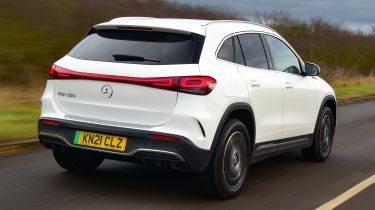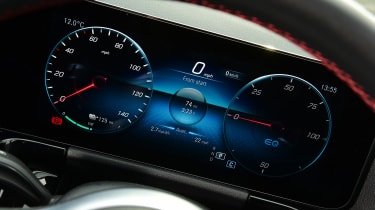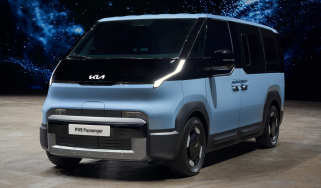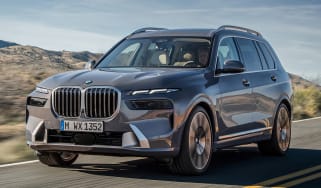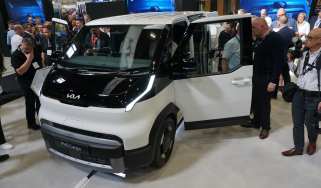Mercedes EQA review - Range, charging and running costs
The EQA has a reasonable range and decent charging capability, but will be expensive to insure

Mercedes claims the EQA 250+ has a maximum range of 311 miles, while the dual-motor 300 4MATIC and 350 4MATIC versions should be able to cover up to 259 miles on a single charge, according to the German carmaker. However, real-world range for all electric cars can be affected by a number of different factors, including weather variations, driving style, vehicle load and even the starting charge of the battery and what optional equipment the car is fitted with.
We managed over 200 miles in our EQA test car during pretty chilly weather and found the trip computer to be reassuringly accurate – staying true to the amount of ground we’d actually covered. This will be of particular benefit to anyone with high levels of range anxiety when driving a battery-powered car.
The EQA's 100kW maximum charging speed is decent enough, but the Merc trails behind the BMW iX1 and electric Volvo XC40 which can reach up to 130kW and 200kW respectively. It should take just over 30 minutes to replenish the EQA’s battery from 10 to 80 per cent using a public rapid charger, and between nine and 10 hours to fully recharge the EQA using a typical 7.4kW home wallbox.
Starting from over £52,000, the EQA is pretty expensive for an electric SUV of this size, but it benefits from the same perks as all electric cars. That includes an exemption for road tax (VED) and the London Congestion Charge until 2025, plus company car drivers are sure to enjoy the 2 per cent Benefit-in-Kind tax rate the EQA attracts for the next few years.
Insurance
Compared to the combustion-engined GLA model, the EQA will be quite expensive to insure. The entry-level EQA 250+ sits in group 38-39, depending on which trim level you choose, while the GLA range starts from group 27 and only climbs above group 40 for the performance-orientated AMG versions.
The 225bhp EQA 300 4MATIC attracts ratings of groups 42-46, with the 288bhp 350 4MATIC variants landing in groups 44-45.
Check if your car needs an MoT and view its complete history with our MoT History Checker...
Depreciation
According to our expert data, the Mercedes EQA will retain between 52 and 57 per cent of its original value after three years of ownership and 36,000 miles.
To get an accurate valuation on a specific model check out our valuation tool...

